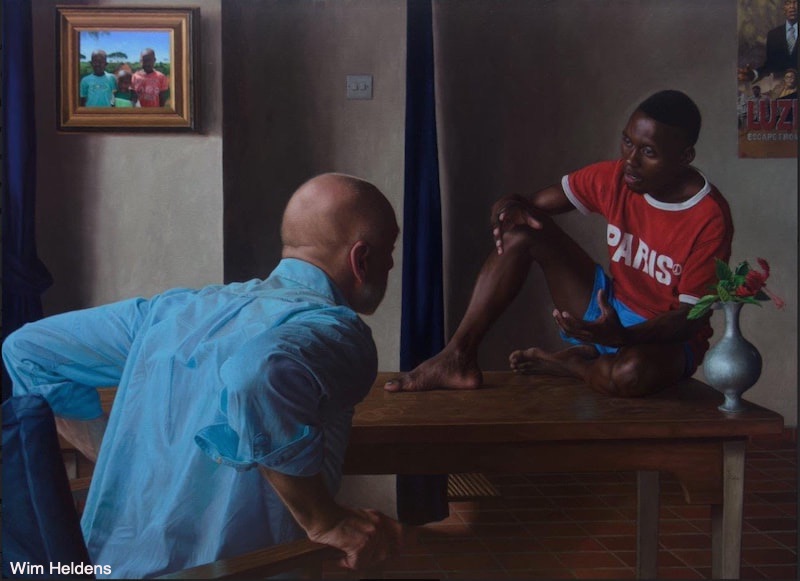Wim Heldens
About Wim Heldens
The Dutch painter Wim Heldens was born in 1954 in Sittard, in the south of the Netherlands.
He showed an obsessive fascination with drawing from an early age and when he applied to various academies, he already had an impressive body of work. Nevertheless, his unusual talent was not recognized and he was not admitted. Disappointed, but still determined, he applied to the Kunstacademie in Frankfurt Germany in 1974 and was immediately accepted.
But when the good news came, he had just moved to Amsterdam and decided that, he had proven his worth, he preferred to go his own way.
Making a living from portrait commissions, Heldens developed this genre as a means to explore the human condition. While around him the modernist revolution was gradually being accepted as a general norm, Heldens explored renaissance techniques and three- and two-dimensional form, including abstract structural patterns (the influence of abstract notions of form is always very close under the surface). Also, the treatment of light by masters of Dutch 17c painting like Vermeer, Terborch and Nicolaes Maes held his fascination. He began to be asked regularly for exhibitions in galleries in the Netherlands. Various trips to Italy in the seventies were a great stimulation; the greatest impression from these years was the psychologically dramatic work of Carravagio.
The discovery of the art world in New York opened a new field of stimulation and experience. In the period 1990 – 95 Heldens divided his time between New York and Amsterdam, easily mixing in the exciting American artistic community where he, within a couple of months, saw his work on show at the Henoch gallery in SoHo, later to be followed with exposure at the Ganymede Gallery and the Open Studio PS122, both in NY City. The wide variety of different trends – from abstract via pop art to photo realism – which he saw in the East Village, where he had a studio, gave him the inner freedom and confidence to pursue and further develop his psychological realism. He viewed his personal style as a possible way forward after modernism had lost most of its credibility. He painted various portraits in commission, among others for the collector Raymond Saroff, who possesses an impressive collection of American native art. In 1995 Heldens participated in the exhibition ‘Representation represented’ in the Arnot Museum in Elmira (NY) together with Janet Fish, Gregory Gillespie, Paul Cadmus, Claudio Bravo and Michael Leonard, where Heldens’ contribution drew much attention.
From 1995 onwards, Heldens increasingly focuses on Amsterdam where he found his canvasses more and more in demand. In 1998 he decided to move away from portrait commissions to be able to concentrate upon a more versatile expression of human drama in contemporary life. Over the years, the psychology behind his work gradually became more complex and ambiguous, Claire-obscure more striking, contrasts sharper – all along with a continuously developing technique. His paintings found their way into private collections in the Netherlands, England, Germany and the USA, and into collections of the Academic Hospital and the ING Bank in Amsterdam, the Bank Nederlandse Gemeenten , the City Council in Sittard and The Arnot Art museum, Elmira New York.
Heldens is one of those artists who know from the beginning what they want to do. For him, painting is a psychological analysis, a narrative of inner life and experience. His realism, which is rooted in renaissance painting but never a stylistic pastiche, gives form to the human condition in modern life.










